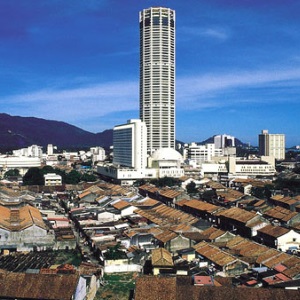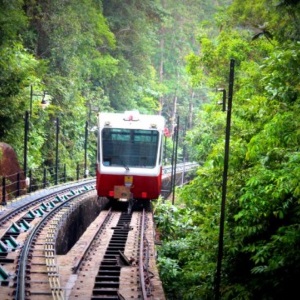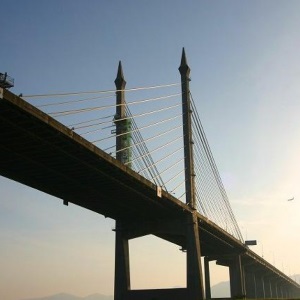Pulau Pinang
An island of rich Chinese heritage, Penang has an array of temples, ruins, museums, preserved forests, and beautiful beaches that make a trip here more than worthwhile. Top it off with the fact that this island is said to be the country’s unofficial food capital, and its no wonder that tourism plays a huge role in its economy. From the water’s edge at the Clan Jetties to the brilliant blue sheen of the Cheong Fatt Tze Mansion, Penang is fairly impressive. We’ve listed the island’s attractions so the next time you make a trip here be sure to consult this A – Z list so you don’t miss out on anything.
Batu Feringgi
Batu Feringghi has been well-developed as a recreational spot teeming with resorts, restaurants and stalls that specially cater to the European tourist market. Batu Feringghi’s atmosphere and feel can be likened to Patong Beach in Phuket, minus the pole dancers of course! There’s a wide range of accommodation available that will suit even the tightest budgets.
Its night market is quite legendary, while its waters are popular spots for a range of water sports activities such as parasailing and windsurfing.

Komtar
KOMTAR is located in central Georgetown, along the north-south Jalan Penang and east-west Jalan Magazine. The 65-storey high-rise and mall is one of the most prominent landmarks in Penang with a viewing deck on the 58th floor offering views of the island and across the straits to Penang’s mainland.
The cylindrical skyscraper is the sixth-tallest building in Malaysia and Penang’s tallest structure. It towers over Georgetown’s western corner, a section of town unofficially known as Chinatown since it is dominated by clusters of shuttered two-storey shop-houses and kongsis (clan houses) that have stood here in a variety of forms since the late 18th century.

Penang Hill (Bukit Bendera)
Penang Hill is located on this island of Penang, within the area called Air Itam. It is 6km from the city. Situated about 823 meters (2750 feet) above sea level on this northern part of Penang, this oldest hill resort and the first in Malaysia has cool, unpolluted air and historical feature. It stands prominently from the lowlands as a hilly and forested area. It’s original name was Flagstaff Hill known by the British, back in the old days of Penang , when a flag fluttering from a flagpole at Bel Retiro, the home of the Governor of Penang at that time, was used as a signal transmitter.
The locals affectionately called it Penang Hill or Bukit Bendera. The hokkien chinese calls it “Seng Kee Sua”.It was Francis Light who plotted Penang Hill during his horse track way back in 1788. British colonials started building bungalows for private use in the 19th century as the climate is cooler on the hill compared to the city heat. Its average temperature is between 20-27 degree celcius.

Penang Bridge
Penang Bridge may not be an official sightseeing spot in Penang but it is the sight that greets most visitors to the island. A 13.5km-long suspension bridge that connects the island to the mainland at Seberang Perai, it is considered a Penang landmark, with locals comparing it to London Bridge.
Also known as Jambatan Pulau Pianng, before it was opened the only way to get to the mainland was via ferry: today the causeway is one of the busiest freeways in the country. The longest bridge in Malaysia and the fourth-longest in Southeast Asia, it is a toll bridge, with fees paid only when heading to the island. The only time it closes is for the annual Penang Bridge International Marathon.


 inquiry.merryworld@gmail.com
inquiry.merryworld@gmail.com